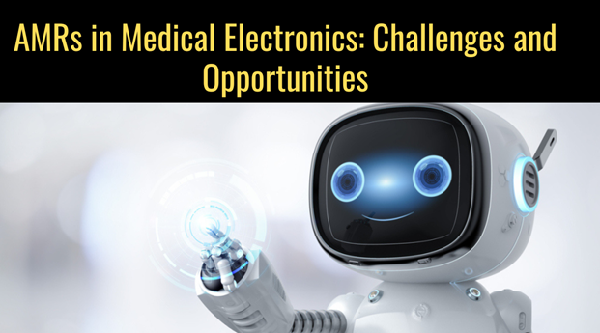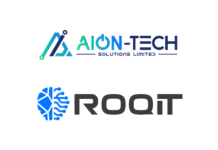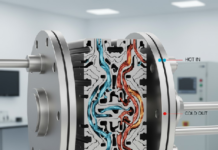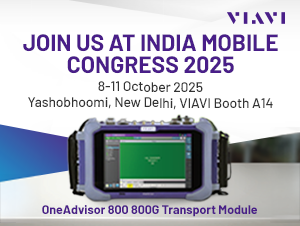
The Autonomous Mobile Robots (AMRs) represent a revolutionary technological breakthrough that has changed different sectors, and the healthcare area is not far behind keeping a close watch on them. Essentially, the job of such robots is to carry out tasks that involve little or no human intervention. To carry out these tasks, they deploy AI, machine learning, and advanced sensors. Medical electronics through the use of autonomous mobile robots market can reap enormous benefits in different areas of application, for instance, intricate surgeries, medical logistics, and patient care. Even though, these technologies hold a lot of promise on the other hand, there are still challenges and opportunities that must be addressed in order to fully integrate them into medical systems.
Key Challenges of Autonomous Mobile Robots in Medical Electronics:
- Regulatory and Safety Concerns
One of the most significant obstacles to the use of autonomous mobile robots (AMRs) in medical electronics is the complicated healthcare regulatory environment. The Food and Drug Administration (FDA) and European Medicines Agency (EMA) are examples of regulatory agencies that have specified certain requirements regarding the safety, efficiency, and performance of AMRs used in healthcare settings. In particular, a robot that provides a drug should guarantee that the dosage is accurate, delivery is safe, and that the drug delivery system is not disrupted by it. The certification process, which involves a lot of trials for safety and reliability, is usually very lengthy and costly. Moreover, as these robots may be invaded by hackers who can steal confidential medical data of patients, the issue of cyber security and data privacy arise when AMRs are integrated with electronic health records (EHR).
2. Integration with Existing Medical Infrastructure
Medical infrastructures have become so complex that it is very challenging for healthcare sectors to use AMRs. These robots should work efficiently with various hospital systems such as medication management software and electronic prescription platforms in order to assure that operations are coordinated.
Hospitals are frequently changing environments, not only in terms of their layout but also with the patients and equipment. A mobile robot enabled with sophisticated sensor and advanced navigation algorithms can maintain their performance and achieve the safety standards even under the evolving hospital scenario while causing very minimal interruption to the clinical workflow as well as patient care.
3. Technical Limitations and Reliability
The technology of autonomous mobile robots (AMR) has made a lot of progress. However, there are still several barriers that limit the use of these robots in the medical field. Since AMRs need to move safely through all the changes that take place in the hospital, they have to be very accurate. LiDAR and visual SLAM systems have also contributed to the improvement of mapping capabilities, but the problematic or crowded areas still remain challenging. Moreover, the constant battery that powers the device limits the continuous operation because of the device’s low energy capacity, which necessitates frequent recharging. More practical energy sources and rugged navigation systems are required in order to achieve the maximum deployment of hospitals as these interruptions can lead to a decrease in the level of productivity and delay in the completion of tasks.
4. Ethical and Human Factors
As autonomous mobile robots operate in settings that directly influence the quality of people’s lives, their employment in healthcare has some very serious ethical questions. One of the main issues is defining the times when robots can decide on their own and which ones need a professional to judge. Though an AMR can do the same task over and over without losing its quality, it is likely that human intervention will still be needed in emergency cases. Gaining trust among patients and staff is just as crucial as some of them might feel uneasy about robots carrying out delicate task of medication delivery. To promote acceptance and safe integration, it is crucial to guarantee openness, regular performance evaluations, and unambiguous operational procedures.
5. Cost of Implementation
New technology such as autonomous mobile robots (AMRs), for instance, may require the healthcare sector to make a considerable initial capital investment before enjoying the benefits. A number of such costs comprise the purchasing of the facility, software, and staff training. These initial costs must be weighed against the long-term benefits if the goal is to find out the payback period. This will give the technology a chance to provide visible benefits to users without financially straining them.
Opportunities of Autonomous Mobile Robots in Medical Electronics:
- Enhanced Operational Efficiency
One of the ways hospital services may be transformed is the use of autonomous mobile robots (AMRs) that are capable of handling the same tasks over and over without a need for human intervention. In a very efficient manner, they can transport meals, medical supplies, medicines, and linens, assuring delivery on time and less workload for the staff. In addition, AMRs equipped with sanitizing instruments such as UV lamps or acid solutions can disinfect patient rooms and public areas without the help of other people, thus, the risk of hospital-acquired infections is minimized. AMRs, in order to help hospitals, optimize operational efficiency, decrease operational costs and healthcare professionals’ fatigue take on these repetitive tasks.
2. Improved Patient Care
The quality of services can be greatly improved by incorporating autonomous mobile robots into patient care. Individually the care-giving robots provide care for the patients by reminding them to take their medications and assisting those who have mobility problems in the hospital. AMRs also allow for the uninterruptible and continuous supervision of patient conditions and vital signs, thus the first detection of changes in health becomes easier. Through the partnership between support and the giving of attention to details, safety, freedom, and the overall welfare of patients are enhanced.
3. Reduction in Human Error
Medical errors are primarily human error in most cases, especially those related to administration of medication, diagnostics, and surgery. Through precise delivery of drugs as well as ensuring that the patient gets the correct medicine in the required dosage at the right time, AMRs can eliminate these hazards to a great extent. The use of robots in surgeries makes the part of control and precision better thus reducing the risk and increasing the success rate. In addition, AMRs are extremely important in taking care of patient’s safety and providing high-quality care as they get rid of errors and assist medical workers to perform at their highest level.
4. Improved Data Collection and Decision-Making
The vast amounts of operational data produced by autonomous mobile robots can be used to improve patient care. Through the observation of patient’s movements and behaviors, they supply doctor’s valuable information that assists in recovery monitoring and early problem identification. By using AI systems to manage this data, the hospitals operations are facilitated, the predictive analytics is supported, and the patient’s needs become clear, that is the efficiency, decision-making, and healthcare outcomes that get better.
5. Cost Reduction in the Long Run
Autonomous mobile robots (AMRs) might be expensive for first-time installation, however, they save a lot in the end. AMRs elevate the efficiency of the labor force as they execute tasks such as cleaning and transportation, thus, healthcare personnel are relieved of routine tasks and can focus on critical activities. Better workflow efficiency and operational accuracy also cut down on errors and resource waste, which lowers overall operating costs and gradually repays the initial investment.
Autonomous Mobile Robots Market
One of the main drivers of the fast growth of the autonomous mobile robots (AMRs) market is the increasing need for automation in the different industrial, healthcare, and logistics sectors. The developments in AI, sensor technologies, and navigation systems, are making efficiency and safety at critical levels. The IFR forecasted a 31% yearly growth in the total number of AMR units in the logistics sector from 2020 to 2023 remarkably illustrates the prompt adoption of AMRs in logistics and material handling. AMRs are being incorporated more and more into healthcare applications for duties like hospital logistics, medical supply management, and patient transportation, which is reflected in the medical electronics sector. According to the Pristine Market Insights, Autonomous Mobile Robots in medical electronics open a radical new possibility for health care that includes better patient care, higher system productivity, and lower expenses. However, their use in medicine still has to break through several hindrances including ethics, technology, and regulations. AMRs can be the game-changers of healthcare future if they solve the problems identified quietly and creatively thus becoming more efficient, safe, and accessible to everyone.

















